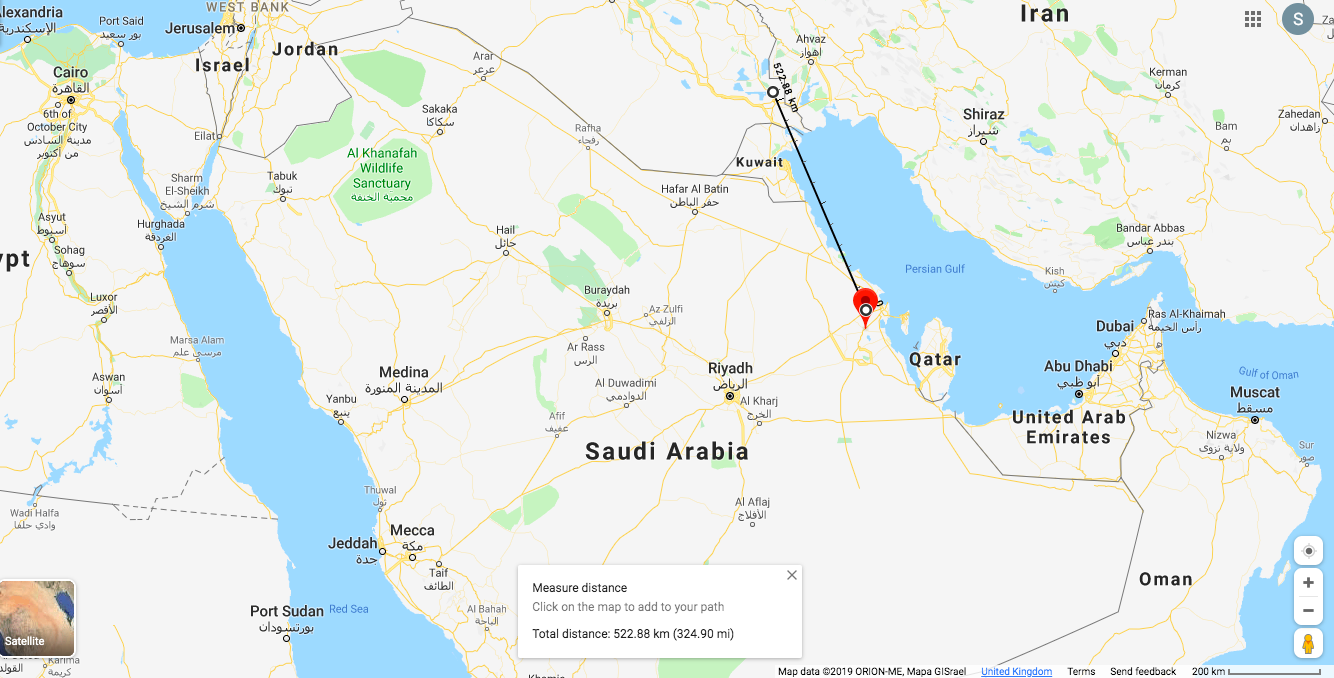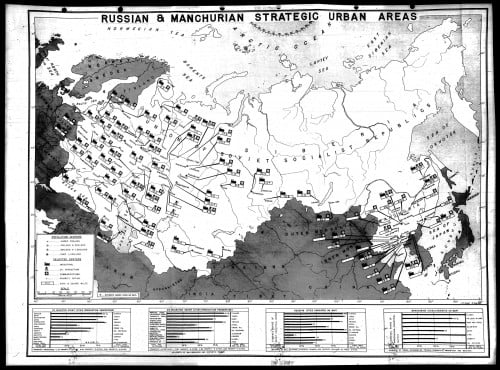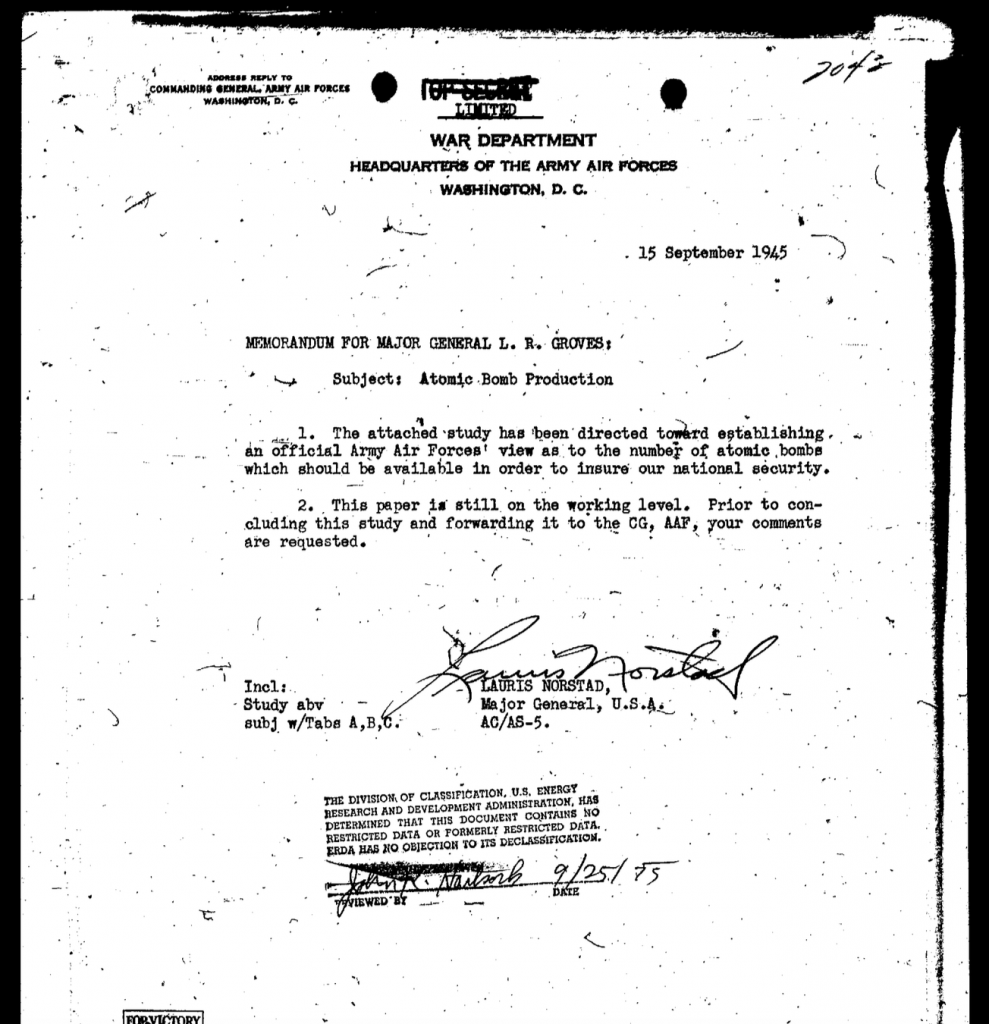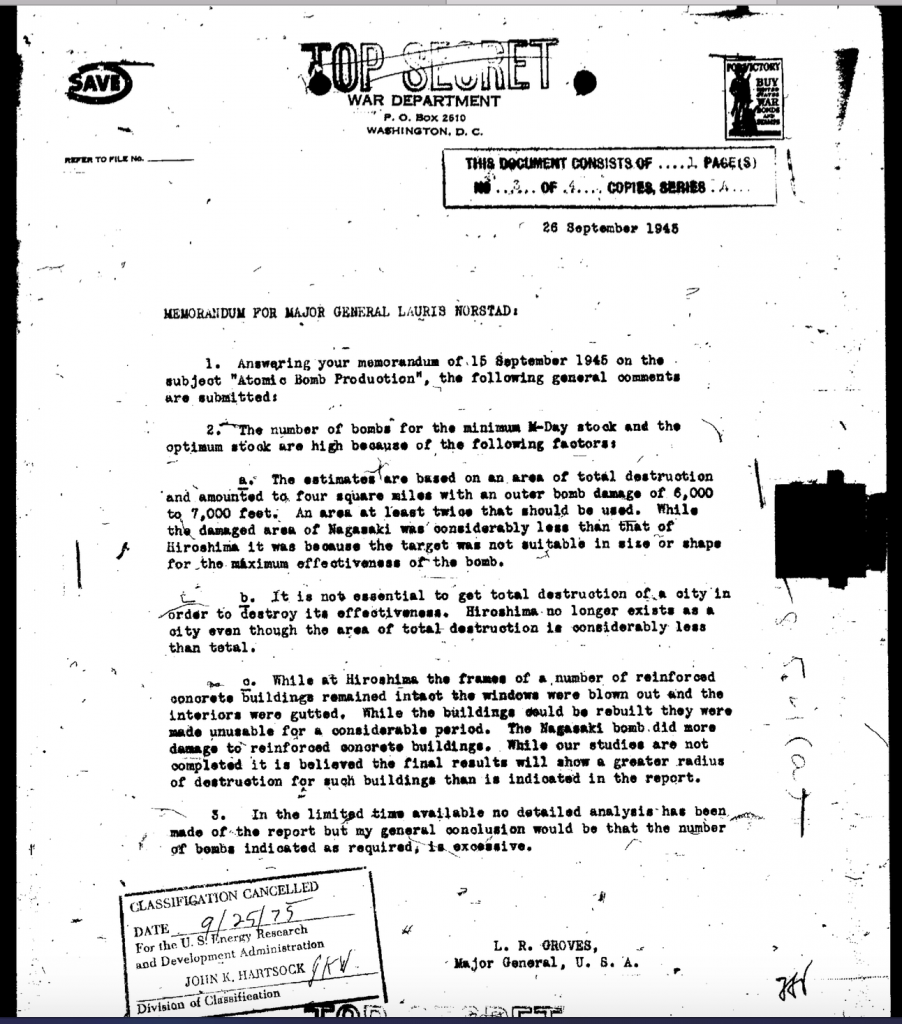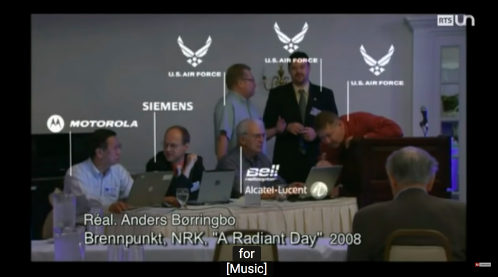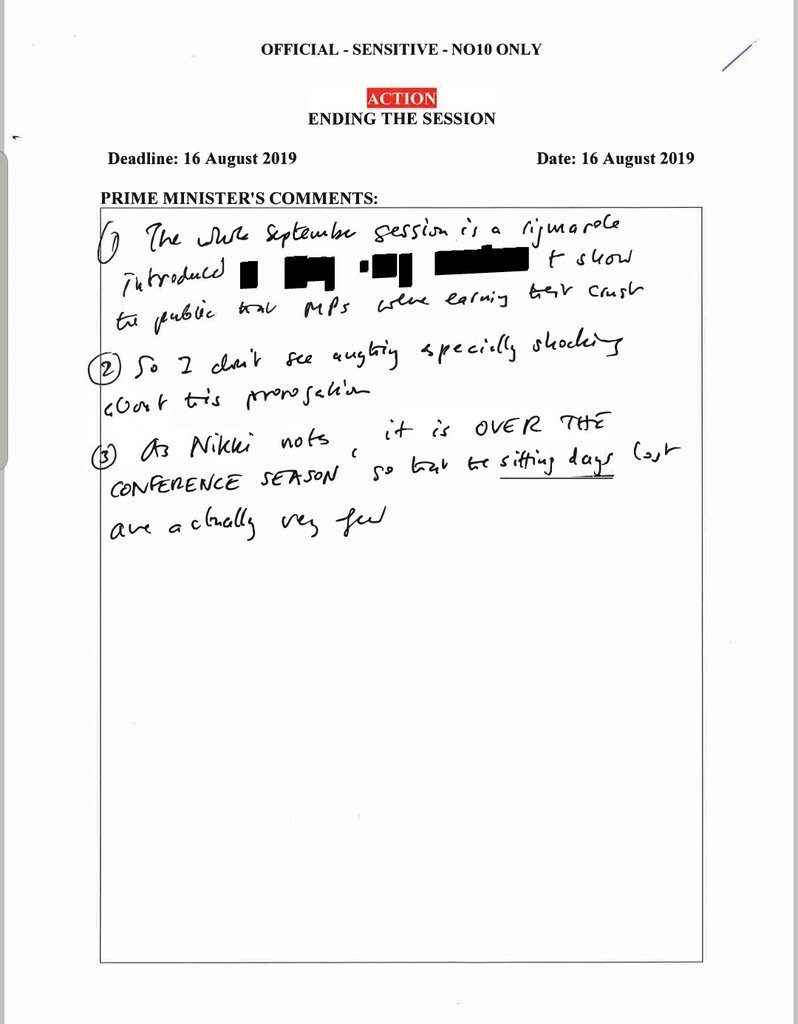What Role Did the Atomic Bombings of Hiroshima and Nagasaki and Soviet Entry into the War Play in Japan’s Decision to Surrender in the Pacific War?
September 16th, 2019 by Dr. Tsuyoshi Hasegawa
Tsuyoshi Hasegawa, a US citizen who was born in Japan, has taught in both countries. Applying his specialized knowledge of Russian history to an analysis of the US decision to drop atomic bombs on Japan, he challenges the prevailing American view that the US decision to drop the atomic bombs on Hiroshima and Nagasaki was justified. The prevailing view is based on two premises: first, the use of the atomic bombs was the only option available to the US government to avoid launching a costly invasion of the Japanese homeland; and second, the atomic bombings had an immediate and direct impact on Japan’s decision to surrender. Dr. Hasegawa rebuts both assumptions. He also assesses a third – and often hidden – justification for dropping the bombs, namely, the American desire for revenge. He argues that, even before the atomic bombings, the United States had already crossed the moral high ground that it had held. He views the US use of atomic bombs as a war crime. But he asserts that this action must be understood in the context of Japan’s responsibility for starting the war of aggression and committing atrocities in the Asia–Pacific War.
Hibiki Yamaguchi: We are so honored and privileged to be here with you to discuss your works on the international history of the atomic bombings on Hiroshima and Nagasaki. You have published numerous books and articles such as Racing the Enemy in English and Anto in Japanese (Hasegawa 2005Hasegawa, T. 2005. Racing the Enemy: Stalin, Truman and the Surrender of Japan. Cambridge, MA: Harvard University Press.[Crossref] , [Google Scholar], 2006Hasegawa, T. 2006. Anto: Sutarin, Toruman to Nihon Kohuku [Deadly Struggle: Stalin, Truman and Japan’s Surrdner] Tokyo: Chuo Koron Shinsha. [Google Scholar]). You are also an expert on Russian history and Russo-Japanese relations. In this regard, you have recently written Crime and Punishment in the Russian Revolution (Hasegawa 2017a Hasegawa, T. 2017a. Crime and Punishment in the Russian Revolution: Mob Justice and Police in Petrograd. Cambridge, MA: Harvard University Press.[Crossref] , [Google Scholar]) and The February Revolution, Petrograd 1917 (Hasegawa 2017bHasegawa, T. 2017b. The February Revolution, Petrograd 1917: The End of the Tsarist Regime and the Birth of Dual Power. Leiden: Brill. (Paperback edition, Chicago: Haymarket Books, 2018).[Crossref] , [Google Scholar]). As far as I understand, you have come to the field of the international historiography of the atomic bombings at a relatively late stage of your career as a historian.
Dr. Tsuyoshi Hasegawa: That is correct. But it might be important and useful to explain my background as well as the trajectory of my scholarly interest at the outset.
I was born in Tokyo in 1941, the year the Pacific War began. In 1945, with constant incendiary bombing in the neighborhood, my family evacuated to the small village of Iburihashi, now incorporated in the city of Komatsu, Ishikawa prefecture. As a four-year old boy, I do not have clear memories of the war, but I remember the crimson sky in downtown Tokyo when the city was bombed on March 9-10,1945. Later in August, the adults gathered at my grandfather’s house in Iburihashi to listen to the emperor announce the termination of the war on the radio. Some fragments of the war are still vivid in my memory.
I grew up in Japan and attended the University of Tokyo, Komaba campus, where I was the editor of the university newspaper. It was the time of large student movements against the renewal of the Treaty of Mutual Cooperation and Security between the United States and Japan (Anpo) in 1960. My close friends divided and splintered along various ideological lines. Although I did not belong to any faction, I became interested in socialism and questioned why the Soviet Union, which was founded on the seemingly utopian vision of socialism, had degenerated into the monstrous Stalinist regime. This led me to study Russian history, especially the Russian Revolution, and I wrote my graduation thesis on the February Revolution.
While attending the University of Tokyo, I also joined a research group on Russian history (Roshiashi Kenkyukai) led by Professor Haruki Wada that exposed me to pioneering research liberated from the rigid Stalinist historiography.
Thanks to a Ford Foundation fellowship, I did my graduate training at the University of Washington in Seattle in the United States. There I wrote my PhD dissertation on the February Revolution.
The University of Washington in 1964–1969, like American campuses everywhere, was a hotbed of Vietnam War protests and the civil rights movement. Traditional Russian history was also being challenged by young scholars, and it was the beginning of attention to the social history of the Russian Revolution.
I then taught at the State University of New York at Oswego for eight years. Studying, teaching, and living in the United States gave me an insight into how American society worked. Impressed by the depth of the roots of American democracy and the diversity it offered, I felt more at home and more liberated in America than in the more regimented Japan, so I became an American citizen in 1976.
American citizenship gave me opportunities to do research in the Soviet Union that were not available in Japan at that time. I had access to archives and established a wide network of relations with scholars.
After long years of research in the Soviet archives, I finally published my first book, The February Revolution, Petrograd, 1917, in 1981.
When I finished the book, the United States was going through another important debate, this time, on the nuclear issue. I became interested in this issue, and retooled myself at Columbia University, familiarizing myself with the esoteric knowledge and theories of nuclear weapons and strategies of both the United States and the Soviet Union. I was particularly interested in arms control as a means to avoid nuclear war.
In 1985, I took a position at the Slavic Research Center of Hokkaido University as the first foreign permanent professor in Japan, thanks to new legislation that had just been passed.
I apologize for the long-winded answer, but I do believe that the uniqueness of my trajectory in life and scholarly background is important to understanding my research. I have lived in three vastly different societies and I am fluent in Japanese, English, and Russian. Because of my background, facility for languages, and diverse scholarly interests in both Russian history and nuclear issues, I think my perspective is different from that of most scholars who have not had such experiences.
Now, finally to answer your question, my stay at the Slavic Research Center coincided with Soviet leader Mikhail Gorbachev’s perestroika, an exciting period that mesmerized not only every specialist on Russia, but also every specialist on international history. While following developments in the Soviet Union, I became interested in the new era of Soviet-Japanese relations and the thorny Northern Territories issue. I found the perspective on this issue by both Japan and the Soviet Union unsatisfactory, with both sides driven by narrow nationalism. There was no room for a meeting point while the world was radically changing before our eyes.
Taking advantage of the American debate on perestroika and the new scholarly approach to nationalism and ethnicity, as well as the new impetus for international history in the United States, I wanted to enter the discussion to bridge the gap. So I wrote a book on Russo-Japanese relations and the Northern Territories both in English and in Japanese (Hasegawa 1998 Hasegawa, T. 1998. The Northern Territories Dispute and Russo-Japanese Relations. International & Area Studies: University of California. [Google Scholar]; Hasegawa 2000 Hasegawa, T. 2000. Hoppo Ryodo Mondai to Nichiro Kankei [The Northern Territories Question and Russo-Japanese Relations] Tokyo: Chikuma Shobo. [Google Scholar]). And in those books, one chapter is devoted to World War II.
When I examined the history of ending the Pacific War, I was surprised to find that very little attention had been paid to the role of the Soviet Union in the ending drama. So that triggered my interest. Originally, I was going to write an article or a short book on Russia’s influence on Japan’s decision-making, but the more I studied, I thought it’s not enough to study Russo-Japanese relations because it’s so connected with international relations, and one had to, of course, bring the United States into the picture.
Looking at American historiography of the ending of the Pacific War, Russia is almost absent. So I decided to study this issue, and I spent many years examining the archives and documents in the United States, Russia, and Japan. The end result is Racing the Enemy. This is the first international history of the subject.
In a way, with Racing the Enemy, I returned to the roots of my childhood memory of the Pacific War, trying to place the fragments of my memory into the full historical background.
The Decision to Drop the Atomic Bomb on Japan: Two False Assumptions
Yamaguchi: So why did you choose the issue of the atomic bombings in particular among various events in the last months of World War II?
Hasegawa: I must stress that this book is not merely about the atomic bombings; it covers broader issues of international history. For instance, the last chapter is devoted to the intricate negotiations between US President Harry Truman and Soviet leader Joseph Stalin on the territorial settlement over the Kuril Islands.
But you are right in one respect. One of the most important issues that the book examines is the issue of the US decision to use the atomic bombs.
The prevailing American view on the atomic bombings ignores or pays little attention to the role the Soviet Union played. The prevailing belief is that the use of atomic bombs was the only choice that the US government had, because without the bombs, the United States would have had to invade Japan, and about a million people, Japanese and Americans, would have perished. And so, to avoid that, the bombs were the only option available to Truman and, in fact, to any president in his place. This is the first assumption.
The second assumption is that the bombs did their job, that they were the decisive factor, providing the knock-out punch, if you will, in forcing the Japanese to surrender. These two assumptions constitute the foundation on which the official view of the US decision to use the atomic bombs is constructed, and they are shared widely by the American public. After careful examination of the archives and other materials, I came to question these assumptions. I concluded that this is a myth, a myth that Americans want to cling to because of their own psychological need to justify the killing as a necessary evil.
With regard to the first assumption, I have to point out that two very important options were available to Americans. And in fact, the options were presented in the course of the deliberations of the US government. The first option was to welcome Soviet entry into the war. By the end of 1944, US leaders had come to the conclusion that in order to force Japan to surrender, invasion of Japan’s homeland would be necessary. The successful execution of this strategy would require Soviet entry into the war in order to pin down the Japanese forces in China and Korea.

Churchill, Roosevelt and Stalin at Yalta
The Yalta Conference was held in February 1945. In order to secure Stalin’s pledge to enter the war, President Franklin Roosevelt promised that the United States would reward the Soviet Union. This was the so-called Yalta Secret Protocol Agreement. There, Roosevelt promised to grant the Soviet Union various concessions on the railways and ports in Manchuria, the return of Southern Sakhalin (Karafuto), and the handing over of the Kuril Islands.
But, in the few months that followed, the situation changed. The war developed in favor of the United States to such an extent that US leaders thought that they could win the war without the Soviets. This was the first dilemma that faced the new president, Harry Truman. Should he welcome Soviet entry into the war and risk of allowing it to enhance its influence in East Asia? Or should he seek to end the war without Soviet help? In that case, the war’s termination might be prolonged, necessitating further sacrifices of American lives.
The second dilemma Truman faced was the so-called unconditional-surrender demand. Under Roosevelt, the United States had demanded unconditional surrender by Japan, and Truman followed this policy faithfully. This was because Japan had engaged in military aggression igniting the war (an unjust war) and had committed numerous atrocities against American and Allied soldiers (violations of justice in warfare). In order to defeat Japanese militarism so that Japan could never rise again as a military power, the United States and its allies sought to impose unconditional surrender. But as the war developed, certain very influential people within the government – such as Secretary of War Henry Stimson, Secretary of the Navy James Forrestal, and Deputy Secretary of State and former Ambassador to Japan Joseph Grew – thought it necessary to define what “unconditional surrender” exactly meant. Particularly important was the status of the emperor. If the United States were to insist on unconditional surrender, particularly if it were to insist on trying or punishing the emperor, as some within the administration insisted, they were convinced that the Japanese would fight on to the very last man. Therefore, they argued, in order to terminate the war, the US would have to define the terms in such a way that it could allow the Japanese to preserve the monarchical system, even under the current dynasty.

Atlee, Truman, Stalin at Potsdam
On July 2, before the Potsdam Conference began, Stimson presented the president with the draft proposal for the Potsdam Proclamation, which was meant to be the ultimatum to Japan. This draft included two important items. First, it anticipated Soviet entry into the war. In fact, the Operations Division of the Army General Staff, which had worked on the proclamation draft, thought that the most effective means of forcing Japan’s surrender was to time the issuance of the ultimatum to Japan to coincide with the initiation of Soviet entry into the war. The second provision was that the Allied powers would allow Japan to preserve the monarchy under the current dynasty, “if it be shown to the complete satisfaction of the world that such a government will never aspire again to aggression”.
.png)
What happened with these provisions? The Potsdam Conference was held from July 17 to August 2. On July 26, the Potsdam proclamation was issued. It said nothing about the entry of the Soviet Union and nothing about the possible preservation of the monarchy. Those two conditions were rejected because of political considerations.
Thus, I would argue that the first assumption – that the atomic bomb was the only alternative for the United States to end the war – was false, a myth. The fact is that Truman did not choose other alternatives available to him.
Yamaguchi: So your conclusion is that these two options were deliberately rejected by American leaders. Is that right?
Hasegawa: That’s right. Those two options were presented, but they were discarded for political purposes.
Earlier I mentioned that Truman faced two dilemmas. How could the president solve those two dilemmas? The first plutonium bomb test was successful, one day before the Potsdam Conference began. Eureka! The US had the winning weapon! With the atomic bomb, the United States would be able to terminate the war before the Soviets entered the war, and it would also be able to bring Japan to its knees. That’s why Truman rejected the alternatives that Stimson presented.
That’s my argument on the first assumption. The atomic bomb was not the only available option; there were two very important options available. But they were rejected for political reasons.
To Deter the Soviets?
Yamaguchi: Some argue that the bombs were intended not only to terminate the war, but also to control or deter the Soviet Union, with a view to the postwar era. What do you think of this view?
Hasegawa: One group of revisionist historians argue that the atomic bombs were used even though Japan had already been defeated. Therefore, there was no reason for the United States to use the bombs. The only reason the United States used them was to intimidate the Soviet Union. The Cold War had already started.
My interpretation is different. Defeat is different from surrender because surrender is a political decision. It’s quite clear that Japan was defeated militarily. There was no way that Japan could win the war or avert defeat. But it remained that the United States had to force the Japanese leadership to accept surrender. That was a very difficult challenge, particularly because Japanese leaders maintained a fanatical belief in the kokutai, worship of the emperor, which they considered the spiritual essence of Japanese nationhood.
Among Truman’s advisers, Secretary of State James Byrnes may have been the most vocal about using the bomb to intimidate the Soviets. But Byrnes also sought to intimidate the Japanese to induce surrender. It is difficult to say which motivation had higher priority for Byrnes.
In my opinion, Truman himself and his administration as a whole used the bomb primarily to terminate the war, but they did so in such a way that – this is where the second motivation comes in – it would prevent the Soviet Union from entering the war. That’s quite different from the interpretation by Gar Alperovitz and other revisionists of this school.
Impact on the Soviet Union
Yamaguchi: I would like to know more about how Soviet decision-making was affected by the development of the American atomic bombs.
Hasegawa: The Soviet Union was also facing a dilemma. They had decided long time – by as early as October 1944 – to enter the war against Japan. But there was one problem. The Soviet Union and Japan had a neutrality pact. It had been concluded in 1941 and included the provision that unless one party notified the other party one year prior to the termination of the pact, it would automatically continue for another five years.
And so, in April 1945, the Soviet government notified the Japanese government that it would not renew the pact. The Japanese ambassador to the Soviet Union, Naotake Sato, asked Soviet Foreign Minister Viacheslav Molotov if the Soviet Union was going to abrogate the pact immediately. Molotov said no, the neutrality pact would remain in effect until April 1946. Of course, that was a lie. Stalin had a very interesting expression – “We will lull the Japanese to sleep.” Stalin wanted the Japanese to believe that the Soviet government was observing the neutrality pact, while in fact it was sending troops and equipment to the Far East in preparation to enter the war.
But there was one problem. The Soviets had decided that the most favorable moment for attack on Japan would be in August. By then preparations would be completed for a surprise attack on all three fronts against Japanese forces in China and Korea, and the weather would be most favorable. But this would be a clear violation of the neutrality pact. So how were they to solve this dilemma? The solution was that, at the forthcoming Potsdam Conference, Stalin would have the Allied nations invite the Soviet Union to join the war. The Soviets’ commitment to the Allies, especially for the higher cause of terminating the world war, would trump its legal obligations to Japan.
One might question why Stalin, known as the major player of Realpolitik, would care much about the legal commitment. Actually, contrary to the belief that the dictator could ignore legal niceties at will, the Soviet government was careful to observe the legal commitments that it made. Moreover, Stalin was concerned that the Soviet entry into the war was a violation of the Neutrality Pact, given that his people had fought and sacrificed so many lives in a war that had been initiated by the Nazi violation of the 1941 Non-Aggression Pact.
But, after the United States acquired the atomic bomb, it moved to exclude the Soviet Union from the ultimatum to Japan, betraying its earlier promise to place the joint ultimatum on the agenda of the Potsdam Conference. On July 26, a few hours before the official issuance of the Potsdam Proclamation, Secretary of State James Byrnes gave the Soviet delegation its text to the press. Throughout the Potsdam Conference, the Soviets had been kept in the dark on the deliberations of the Proclamation, although the American and the British delegations were constantly in touch with each other, and the text was sent to Chiang Kai-shek for his approval. The announcement was a total shock to the Soviets. Upon learning about the proclamation, signed by Truman, Churchill, and Chiang Kai-shek, the Soviet Union hastily wrote up its own joint proclamation and asked the United States to postpone the issuance of its proclamation, presumably so that the Soviets could present their own version at the conference. The United States promptly rejected the request. It had already been released to the press before Molotov made the request a few hours before the official issuance of the proclamation. Molotov’s request came too late, Byrnes explained. The Soviets were outmaneuvered, and lost the chance to present their version, and their draft was sent to the archives.
And what did Stalin do next? On July 29, Molotov, who attended the meeting in place of Stalin, who claimed that he was sick, proposed that Truman should invite Stalin to sign the proclamation. Truman rejected this offer as well. Later Truman explained: “I did not like this proposal for one important reason. I saw in it a cynical diplomatic move to make Russia’s entry at this time appear to be the decisive factor to bring about victory.” Truman’s rejection convinced Stalin, finally, that the United States was trying to force Japan to surrender before the Soviet entry into the war. If that occurred, all the promises that the United States made at Yalta would be nullified. Stalin became desperate. The race between the atomic bombs and Soviet entry into the war had begun in earnest.
Image on the right: Iconic image of the Hiroshima bomb

Fumihiko Yoshida: When Stalin was notified about the atomic bomb by Truman during the Potsdam conference, what impact did this have on Stalin? I presume the Soviet Union was preparing its own nuclear-weapons program.
Hasegawa: That’s a very interesting question. The Soviets had already begun their project to develop atomic weapons and they had spies in the Manhattan Project; the most important was Klaus Fuchs. The Soviet Union was aware of what the United States was doing.
When the first US nuclear test succeeded on July 16, however, the Soviet secret police had no knowledge of the test.
During the Potsdam Conference, when a report about the successful test in New Mexico reached Truman on July 21, he conferred with UK Prime Minister Winston Churchill about what to do with this information. They agreed that something had to be reported to Stalin but that they should not reveal that this was the atomic bomb.
So during recess at the conference on July 24, Truman approached Stalin. Everybody on the American and British sides was watching, because they wanted to know what Stalin’s reaction would be. Truman told Stalin: “I have to tell you that our country has acquired a new weapon of unusual destructive force”. Stalin looked at Truman and said, “Well, I hope you make good use of it.” Truman and everyone else thought Stalin didn’t know that Truman was talking about the atomic bomb without specifically referring to it as such.
But Stalin was fully aware. When he came back to his villa, he called a conference. He was angry about the failure of intelligence to detect the successful American test of the plutonium bomb. He said: “We are not going to let the Americans use this to intimidate us”. That night he ordered his scientists to speed up the Soviet atomic-bomb project.
The question is whether Stalin expected the United States to use the bomb. I don’t think that he expected the United States to make the bomb operational so quickly. But the first bomb was dropped on Hiroshima on August 6 at 8:15 Tokyo time. When exactly the news of the atomic bomb reached Stalin is not known, but he must have heard the news by late afternoon or the evening of August 6. I believe that when Stalin received the news, he was in real shock. And in fact, if you take a look at Stalin’s daily schedule book, he met all kinds of people on August 5, when he returned to Moscow from Berlin, to discuss with them preparations for the war.
But on August 6, the day when the Hiroshima bomb was dropped, Stalin’s appointment book was blank. This blank page speaks volumes. I suspect that he was in deep shock. He must have thought that the atomic bomb might prompt Japan to end the war immediately, before the Soviets entered the war. But on August 7, Ambassador Sato requested a meeting with Molotov to inquire about Japan’s pending request for mediation. From this request, Stalin learned that the game was not over yet. He sprang into action. He ordered his military to move up the date to start the war by 48 hours, to midnight of August 8-9.
What Was the Decisive Factor in Ending the War?
Yamaguchi: Now we would like to discuss the second assumption that you have mentioned. You rebut the argument that the atomic bombs were the decisive factor in Japan’s surrender. Could you expand on that?
Hasegawa: We have to go back a little bit. Japan also faced a dilemma. The Battle of Okinawa began on 1 April 1945. The Japanese military and the emperor himself thought that they would inflict damage on the Americans and gain favorable conditions under which they could terminate the war. But the Battle of Okinawa ended in mid-June with a decisive defeat for Japan.
This was the first time that Japanese leaders seriously started to discuss how to terminate the war. The Japanese government was hopelessly divided. The highest decision-making body, the Supreme War Council, consisting of the Big Six (prime minister, foreign minister, Army minister, Army chief of staff, Navy minister and Navy chief of staff), required unanimity before any decision was brought to the emperor for approval. But the military – the war party – (except for the Navy minister) continued to insist that in the anticipated American invasion of Kyushu, the Japanese would inflict tremendous damage on the Americans and break their morale.
Those who favored immediate peace – the peace party – led by Foreign Minister Shigenori Togo, Navy Minister Mitsumasa Yonai, and Marquis Koichi Kido, Lord Keeper of the Privy Seal, who was not a member of the Big Six, but was the Emperor’s most trusted adviser, thought that continuing the war would diminish the possibility of gaining favorable terms. What did they mean by that?
There was a consensus between the war party and the peace party: the minimal condition for the termination of the war should be the preservation of the kokutai. The kokutai was centered around emperor worship, which the Japanese leadership considered the essence of the nation. If this condition was not met, Japan would fight to the bitter end, to the last soldier and the last civilian. They interpreted the American demand for unconditional surrender as tantamount to the destruction of the kokutai. Thus, they precluded negotiations with the US and Britain.
There was only one major country that remained neutral. That was the Soviet Union. So they decided to approach the Soviet Union and seek help to mediate the termination of the war.
That was a colossal diplomatic mistake, because, as noted above, the Soviet Union had already decided that it would wage war against Japan and was making preparations for it in earnest, especially after the German capitulation on May 7. Moreover, Japanese intelligence sources detected that the Soviets were sending troops and equipment on a massive scale to the Far East and warned that Soviet entry into the war was imminent. But the Japanese top leaders ended peace feelers in Switzerland and Sweden, and put all their eggs in the Soviet basket. They confused strategic thinking with wishful thinking, hoping to persuade the Soviet Union to mediate by offering generous territorial concessions. These concessions were, however, much smaller than those that Stalin had been offered at Yalta.
One crucial point that was to become a contentious issue later – and remains contentious today – was the possession of the southern Kurils, which the Japanese now call the Northern Territories. (They didn’t do so then.) As I mentioned before, the entire Kuril chain was included in the reward promised to Stalin by the Yalta secret protocol, but the southern Kurils were not included in the concessions that Japan was willing to grant to the Soviet Union. That was because this part of the Kurils had been recognized as belonging to Japan by the Russians in the Treaty of Shimoda in 1855, and had always been a part of Hokkaido, that is, an inherent part of Japanese territory. Whether this territory should be included in the territorial concessions to the Soviet Union was not debated in the Japanese government, most likely because this fact was taken for granted.
On July 12, five days before the Potsdam Conference began, Foreign Minister Togo sent a telegram to Ambassador Sato, instructing him to approach the Soviet government to request mediation, saying that the emperor would send Prince Fumimaro Konoye as his special envoy to Moscow for that purpose. Molotov asked further clarifications, but left for Potsdam without responding to Sato’s request for mediation.
When Stalin met Truman on July 17, shortly before the official conference began, Stalin revealed to Truman that he had received Japan’s request for Soviet mediation to terminate the war. Stalin told Truman that he would prefer to “lull the Japanese to sleep,” without answering Japan’s request. Actually, Truman knew all this through his secret intelligence operation, Magic intercepts of Japanese diplomatic dispatches. Without revealing that he knew this, Truman approved Stalin’s policy not to respond to Japan’s request. Both wanted to prolong the war long enough to surprise Japan, Truman with atomic bombs and Stalin with entry into the war against Japan.
When the Potsdam Proclamation was issued on July 26, the Japanese government was still patiently waiting for the Soviet answer on mediation.
How then did the Japanese government react to the Potsdam Proclamation? First, they immediately noticed that Stalin did not sign it. So they continued to stay the course: to seek the termination of the war through Soviet mediation. Secondly, the proclamation did not say anything about the fate of the emperor, which was the most important concern for Japanese leaders. Togo thought that there was room for negotiation with the Allies on the terms specified by the Potsdam Proclamation.
The Japanese made another cardinal mistake here. Prime Minister Kantaro Suzuki allegedly declared at a press conference that Japan was going to mokusatsu the proclamation. But mokusatsu is not total rejection. It basically means they were going to “keep silent”, and “ignore” it. I say “allegedly” because it is not clear that Suzuki made this declaration or if the press interpreted his ambiguous statement and used the term mokusatsu.
But the US government took it as rejection. Presumably, Truman and his advisers had not expected the Japanese to accept their ultimatum in the first place. The removal of any reference to the preservation of the monarchy ensured that the Japanese would most likely not accept the ultimatum. They took Suzuki’s unofficial mokusatsu statement as Japan’s official rejection of the ultimatum, providing a convenient justification for the use of the atomic bombs.
Actually, the order to use the atomic bombs (not only the first bomb but also the second) was given on July 25, not by the president – no presidential order was given – but by General Thomas Handy, the acting chief of staff of the Army to General Carl Spaatz of the Army Strategic Air Forces, while General Marshall was away in Potsdam, one day before the Potsdam Proclamation was issued. Spaatz was ordered to “deliver the first special bomb as soon as weather permits visual bombing after about 3 August 1945 on one of the targets: Hiroshima, Kokura, Niigata and Nagasaki.” It added: “Additional bombs will be delivered on the above targets as soon as made ready by the project staff.” The use of the atomic bomb was treated as a routine military matter, just as the decision to carry out conventional strategic bombing that had destroyed 64 Japanese cities prior to the atomic bombing over the preceding four months. The train had already left the station, and barring Japan’s immediate decision to surrender by accepting the Potsdam ultimatum, the atomic bombs were fated to be dropped on two of these targets. With the removal of Stimson’s two crucial stipulations, there was little chance that the Japanese leaders would immediately accept the Potsdam Proclamation.
.png)
General Handy’s order to drop the atomic bombs
Yamaguchi: The United States then dropped the bomb on Hiroshima on August 6.
Hasegawa: Yes. So what was the impact of the Hiroshima bomb? Of course, it was a tremendous shock. But it cannot be said to have been decisive and to have led to Japan’s immediate decision to surrender. Right after the Hiroshima bomb was dropped, later on the afternoon of August 6, Foreign Minister Togo sent an urgent dispatch to Ambassador Sato in Moscow, telling him that they were in a dire situation with the new bomb and urging Sato to meet Molotov immediately to inquire about Japan’s request for Soviet mediation. That meant that despite the atomic bomb on Hiroshima, the Japanese government was still seeking to terminate the war through Soviet mediation. That was also the first response of the Japanese government to the bomb in Hiroshima. This is telling evidence that the Hiroshima bomb was not decisive.

Soviet forces invade Manchuria
And then, after midnight of August 8-9, Soviet Far East time, two in the morning Japan time, Soviet tanks rolled into Manchuria, and planes attacked Japanese forces. This surprise attack was totally unexpected. It was only then, on the morning of August 9, that the Supreme War Council was convened for the first time. It had not met following the atomic bomb on Hiroshima. But it was convened immediately after the Soviet attack.
During the heated debate at the Supreme War Council the first news of the second atomic bomb on Nagasaki was conveyed to the Japanese leaders. The original report said that the bomb caused minimal damage. The Imperial General Headquarters record of this meeting simply stated that the bombing had no impact on the group’s deliberations. There were altogether six reports on the impact of the atomic bomb on Nagasaki dispatched to the Imperial General Headquarters, each conveying progressively more alarming news of the damage. Nevertheless, there exists no record indicating that the second atomic bomb had an impact on the debate within the top echelons of the Japanese leaders. In other words, not only the first atomic bomb on Hiroshima but also the two bombs combined were not decisive, to use the terminology of boxing, they provided no “knock-out” punch, in terms of the Japanese decision to terminate the war. Even after the one-two punch of the Hiroshima and Nagasaki bombs, they could not decide, because the Supreme War Council was still divided. Unable to come to a consensus, they made an unprecedented decision – to defer the final decision to the emperor by holding an imperial conference.
The imperial conference that began at 11:30 PM on August 9 and continued into the early hours of August 10 eventually decided, with the emperor’s consent, to accept the terms of the Potsdam Proclamation with one condition: “on the understanding that the Allied Proclamation would not comprise any demand which would prejudice the prerogatives of His Majesty as a Sovereign Ruler [Tenno no kokka tochi no taiken].”
The United States rejected this condition. The emperor’s prerogatives included tosuiken, the control of the military. That prerogative was a crucial factor for Japanese militarism. The United States had been fighting the war to eradicate Japanese militarism, and there was no possibility – whether they be hawks or doves – that they would accept this condition. In fact, the objections to this condition came from the Japan specialists who had advocated softening the unconditional-surrender demand. Secretary of State Byrnes sent the so-called Byrnes note to Japan making it clear that after acceptance of the ultimatum, the Japanese emperor should be subject to the control of the Supreme Commander of the Allied Powers. As far as the Japanese future polity was concerned, it would be determined by the freely expressed will of the people.
The Byrnes note prompted even more serious division among Japanese leaders than on previous days. Even those people who initially favored peace questioned what the United States meant by saying that the Japanese emperor was “to be subject to the Supreme Commander of the Allied Powers”. The Japanese emperor was divine and not to be subjected to anything, the hard-liners insisted. Furthermore, the kokutai was not the issue on which the emperor’s “subjects” could make a determination. Since this was the accepted view of kokutai in Japan, the peace advocates had a hard time countering the hard-liner’s counter-attack.
As a result, there was a backlash. Even Suzuki, Togo and Yonai began to waver, but the second-tier peace factions, who had worked hard to secure peace in the Prime Minister’s Office (Hisatsune Sakomizu), the Foreign Ministry (Shunichi Matsumoto) and the Naval Ministry (Sokichi Takagi), conspired behind the back of the strengthened war party. They managed to mobilize the wavering Kido, Togo, Yonai and eventually Suzuki to arrange a second imperial conference. And it was at this second imperial conference that the emperor accepted the terms specified by the Potsdam ultimatum unconditionally. Japan would accept defeat, although it did not use the term “surrender” (kofuku), merely “the termination of the war” (shusen). It was also decided that the emperor would broadcast the imperial rescript announcing the “termination of war” on the radio, another unprecedented event, since until then the emperor’s real voice had never reached his “subjects”.
So that’s the way that the war was terminated. This is my long analysis of the second assumption that the atomic bomb was a decisive factor on the Japanese decision to surrender. Neither the first bomb nor the combined two bombs had immediate and direct impact on Japan’s decision to surrender.
So the two very important justifications for the US decision to drop the bomb were false. They were merely myths.
Yoshida: Do you think then that the Soviet entry into the war was a decisive factor?
Hasegawa: It can be argued that the Soviet entry into the war was not a decisive factor either since even after Soviet tanks entered Manchuria, the Supreme War Council could not reach a consensus and had to ask the emperor to make the decision.
There is no smoking gun to determine which – the atomic bomb on Hiroshima, the two atomic bombs combined, or the Soviet entry into the war – had a decisive impact on Japan’s decision to surrender. I think that everything is speculation. That’s partly because the Japanese government burned all the documents it could at the end of the war, so we lack documentary evidence to draw definitive conclusions. And secondly, very important surviving documents and archives still are not available. For instance, the Imperial Household Agency (Kunaicho) has records, but these have not been made available. So we don’t know what the emperor thought and what he discussed with his advisers, especially Kido, and others. There exists Army minister Korechika Anami’s diary, but it has not been made public.
But from the circumstantial evidence, I would say, again, that the Soviet factor is more important than not only the first bomb on Hiroshima, but also the two atomic bombs combined. The Japanese government relied heavily on Soviet neutrality. It clung to the hope of Soviet mediation right up until the Soviets entered the war. It is important to stress that even after the Soviet attack, Japan did not declare war against the Soviet Union, limiting the military resistance merely to self-defense.
But Japan was betrayed when it was clinging to the hope of Soviet mediation. The Japanese characterized the Soviet action as that of a fire thief (kajiba-dorobo). The betrayal had a tremendous psychological effect. The sight of Soviets tanks rolling into Manchuria, Korea, then Sakhalin and the Kurils was indeed alarming, prompting a fast turnaround by the top policy-makers, including the emperor, with regard to the role of the Soviet Union. If the Soviets continued to march, they might even gain a decisive voice in the Allied Occupation Council and might claim a part of Japan as their occupation zone, making even the preservation of the current imperial dynasty uncertain. In fact, in the negotiations with Truman, Stalin demanded that the Soviets have an occupation zone in a part of Hokkaido and a slice of Tokyo.
Suddenly, the fourth provision of Byrnes’ note, which stipulated that Japan’s future polity would be determined by the freely expressed will of the people, became more attractive. And this was the point that the emperor made to Kido for unconditional acceptance of the Potsdam terms. In other words, in order to preserve the current imperial dynasty, if not the kokutai as they understood it, Japanese policy-makers, including the emperor, bet on the American side hoping that the United States would be willing to preserve the Imperial House, and specifically, it would be more willing than the Soviets to do so. It is important to note that in the imperial rescript as well as the prime minister’s announcement of the termination of the war, they pretended that the kokutai was preserved although the meaning of the kokutai was transformed from the traditional mythical term, the spiritual essence of Japan’s nationhood, into the preservation of the Imperial House.
For these reasons, I think that the Soviet entry into the war had a more important impact on Japan’s decision to surrender than the two atomic bombs combined.
The Third Justification: Revenge
Yamaguchi: Do you think any kind of domestic political considerations contributed to the US decision to drop the bomb?
Hasegawa: That’s very important. There is a third, hidden justification that Americans don’t state very openly. That is revenge. The United States experienced the surprise attack on Pearl Harbor. The United States and the Allies, including China, as well as Asian people under Japanese rule, suffered atrocious treatment of their prisoners of war and civilians – the Nanjing Massacre, the Bataan Death March, experiments using poison gas and chemical warfare on live prisoners, the comfort women, beheadings and torture, and innumerable other atrocities in violation of the rules of warfare.
When there were carpet bombings, such as the Nazis’ attacks on Rotterdam and Warsaw and Japanese attacks on Chongqing and Shanghai, President Roosevelt issued a statement denouncing these as totally unethical. There are certain things that you cannot do even in time of war. There are the rules of conduct in warfare. For instance, the use of poison gas is banned by the Hague Convention.
But these high principles gradually eroded when the Pacific War began, as John Dower argues in his book War Without Mercy, both sides demonized the other side (Dower 1986Dower, J. 1986. War without Mercy: Race and Power in the Pacific War. New York: Pantheon Books. [Google Scholar]). And pretty soon, the American side began to think that the only way the Japanese could learn their lesson was to completely annihilate them physically. New Republic wrote in 1942: “The natural enemy of every American man, woman and child is the Japanese man, woman and child.” One official of the Information office in the Army declared in 1944: “The entire population of Japan is a proper target… There are no civilians in Japan.”
This desire for vengeance was also apparent in Truman. When the Federal Council of Churches protested the use of the atomic bombs on August 11, 1945. Truman responded: “Nobody is more disturbed over the use of Atomic bombs than I am but I was greatly disturbed over the unwarranted attack by the Japanese on Pearl Harbor and their murder of our prisoners of war. The only language they seem to understand is the one we have been using to bombard them. When you have to deal with a beast you have to treat him as a beast.”
So, by the time the United States used the atomic bomb, that moral divide that President Roosevelt had espoused had already been crossed. Once that divide was crossed, it was easier to go one step further from incendiary bombings to the atomic bombings.
Yoshida: In the Tokyo bombing, 100,000 people were killed in one night. So even in Japan, there is an argument about what the difference between Tokyo and Hiroshima is.
Hasegawa: But there are qualitative differences between conventional strategic bombing and atomic bombing. While the Tokyo bombings were carried out by 279 B-52s, dropping 1,665 tons of incendiary bombs, one single atomic bomb could kill as many people. That is, one bomb over one city. The second issue is radiation. If poison gas was prohibited by international law, then certainly the atomic bomb should be prohibited, too, since it is more atrocious than poison gas in terms of mass killing of civilian populations. Truman himself became aware of the horrible consequences of atomic bombings. That’s why when he received the news of the enormous number of victims of the Hiroshima bomb after the second bomb was dropped on Nagasaki, he ordered that any future use of atomic bombs would require presidential authorization. Later on, before he fulfilled his term of office, he admitted that the atomic bomb was many times worse than poison gas.
But I have one more important thing to add. Since I am both Japanese and American, I would like to make clear which voice I use to make the following points. Although as an American citizen, I believe that the use of atomic bomb should be recognized as a war crime to help prevent the Americans from committing the same mistake in future.
But as a Japanese, I would like to stress that when we talk about Japan as a victim, we also have to recall that Japan was also a perpetrator of war. Japan colonized Korea and Taiwan, invaded China, attacked Pearl Harbor, and committed numerous atrocities during the war. Countless numbers of people suffered at the hands of the Japanese. We must acknowledge that Japan must also take responsibility for war crimes, recognizing that our hands were also soaked with blood.
There is also the issue of political responsibility for prolonging the war. If Japan had terminated the war earlier, there would not have been the atomic bombings or Soviet entry into the war. Very few Japanese will voice their opinion on this issue, including the responsibility of the Japanese emperor. He could have more decisively intervened earlier to terminate the war and save many Japanese, Asian and American lives. He could have abdicated from the throne after the war to accept his responsibility for supporting the war. That’s taboo, and few Japanese historians touch upon it. We cannot only protest that we are innocent victims of the bomb without atoning for the crimes that Japan committed. Tears that pour out for the victims of the atomic bombs must also be accompanied by prayers for those who fell victim to Japan’s criminal acts during the war.
Nuclear Weapons as a War Crime
Radomir Compel: In your book you write that the possession of nuclear weapons, or the potential for use of those weapons changed the attitude of the United States (e.g. with regard to the Imperial system or early Soviet entry into the war). In general terms, is it conceivable that possession of nuclear weapons hardens policy makers determination to pursue their goals more harshly or more assertively?
Hasegawa: I think there are two types of military men and women or even policy-makers with regard to the use of the atomic bomb. The first group holds that it should be used only for deterrence. But there is another group that believes that the atomic bomb can be used as a legitimate war-fighting weapon. It is for that reason that nuclear weapons have been constantly improved and miniaturized, so that they can be used in war.
My fear is that, as long as nuclear weapons exist, they could ultimately be used. President Donald Trump thinks that new types of nuclear weapons can easily be used against rogue states. He and other authoritarian leaders would not think twice about using them.
The only way to prevent another use of the atomic bomb is to build a global constituency committed to honoring and acting on the slogan that Nagasaki adopts – let Nagasaki be the last victim of the atomic bomb by abolishing nuclear weapons altogether.
When I was thinking about nuclear weapons in the middle of the Cold War, I was more interested in arms control or how to prevent the use of the atomic bomb rather than nuclear disarmament or total abolition of nuclear weapons.
I spent many years working on the decision-making process a the top, but after published Racing the Enemy, I began reading about what was happening on the ground in Hiroshima and Nagasaki. I read many eye-witness accounts, saw the illlustrations drawn by the victims, and read a rich trove of atomic bomb literature (Tamiki Hara, Sankichi Toge, Masuji Ibuse, Kenzaburo Oe, Yoko Ota, among others). Historians who work on diplomatic history rarely lower their gaze on the ground. But I challenge how many of these diplomatic historians who justify the dropping of the atomic bombs have the courage to make the same argument, after becoming familiar with what occurred on the ground on Hiroshima and Nagasaki, and what sufferings the survivors have endured over the years. After serious reflection on these accounts, I have finally come to the conclusion that nuclear weapons must be abolished altogether. That’s the only way to prevent them from being used and the use of nuclear weapons should be denounced as a war crime.
Compel: In the system, as it is today, we can condemn only a very few cases among the many war crimes that occur. For example, there have been convictions for war crimes in Yugoslavia and in places where the interests of great powers are not involved, like Africa. At the same time, many incidents in the wars in Syria, Afghanistan, or Iraq are not being prosecuted, because they are kept outside of ICC (International Criminal Court) jurisdiction. Also, despite the fact that war crimes may be committed by other parties to the conflict, often only one party is being tried and found guilty. This leaves an impression that the other party has not committed any war crimes. Does this not apply to cases like Hiroshima and Nagasaki? And do you think there might be a way to address such imbalances?
HasegawaTH: Between August 6, that is between the day that the atomic bomb was dropped on Hiroshima and on August 9, when the second bomb was dropped on Nagasaki, the Allied powers – the United States, Soviet Union, Great Britain and France – got together and talked about their policy for trials of war crimes. And they eliminated strategic bombing from the category of war crimes. That meant that atomic bombing would not be addressed in war crimes trials. Judge Radhabinod Pal of India presented a dissenting view, raised the question of the use of atomic bombs as a war crime at the International Military Tribunal for the Far East, but his opinion was ruled out.
Your question is about how to make it happen. I don’t know. It’s a very difficult task, particularly in the current climate. But we have to keep working. As Voltaire said in his Candide, “We must cultivate our garden.”
*
This article is adapted from Hibiki Yamaguchi, Fumihiko Yoshida and Radomir Compel, “Can the Atomic Bombings on Japan Be Justified? A Conversation with Dr. Tsuyoshi Hasegawa“, The Journal for Peace and Nuclear Disarmament Vol 2, Issue 1, 2019, pp. 19-33 Following the original, Japanese surnames are listed after given names.
Note to readers: please click the share buttons above or below. Forward this article to your email lists. Crosspost on your blog site, internet forums. etc.
Hibiki Yamaguchi is managing editor of the Journal for Peace and Nuclear Disarmament (J-PAND).
Fumihiko Yoshida is editor-in-chief of J-PAND. He also serves as director of the Research Center for Nuclear Weapons Abolition, Nagasaki University.
Radomir Compel is associate professor in the School of Global Humanities and Social Sciences at Nagasaki University.
Sources
Alperovitz, Gar, 1996. The Decision to Use the Atomic Bomb. New York: Viking Press.
Bird, Kai and Lawrence Lifschulz, 1998. Hiroshima’s Shadow. Stony Creek, Conn.: Pamphleteer’s Press.
Butow, J. C. Robert, 1956. Japan’s Decision to Surrender. Stanford: Stanford University Press.
Dower, John. 1986. War without Mercy: Race and Power in the Pacific War. New York: Pantheon Books.
Dower, John, 2010. Cultures of War: Pearl Harbor, Hiroshima, 9-11, Iraq. New York: W. W. Norton.
Frank, Richard, 1999. Downfall: the End of the Imperial Japanese Empire. New York: Random House.
Gordin, Michael, 2007. Five Days in August . Princeton: Princeton University Press.
Hasegawa, Tsuyoshi. 1998. The Northern Territories Dispute and Russo-Japanese Relations. International & Area Studies: University of California.
Hasegawa, Tsuyoshi. 2005. Racing the Enemy: Stalin, Truman and the Surrender of Japan. Cambridge, MA: Harvard University Press.
Hasegawa, Tsuyoshi. ed., 2007. The End of the War Pacific War: Reappraisals. Stanford: Stanfored University Press.
Hasegawa, Tsuyoshi. 2017a. Crime and Punishment in the Russian Revolution: Mob Justice and Police in Petrograd.Cambridge, MA: Harvard University Press.
Hasegawa, Tsuyoshi. 2017b. The February Revolution, Petrograd 1917: The End of the Tsarist Regime and the Birth of Dual Power. Leiden: Brill. (Paperback edition, Chicago: Haymarket Books, 2018).
Holloway, David 1994. Stalin and the Bomb. New Haven: Yale University Press.
Malloy, Sean, 2008. Atomic Tragedy: Henry Stimson and the Decision to Use the Bomb against Japan. Ithaca: Cornell University Press.
Norris, Robert, 2002. Racing for the Bomb. South Royjalton, VT: Steerforth Press.
Rhodes, Richard, 1986. The Making of the Atomic Bomb. New York: Simon & Schuster.
Southard, Susan, 2015. Nagasaki: Life after Nuclear War. New York: Viking.
Tanaka, Yuki and Marilyn Young, ed., 2009. Bombing Civilians. New York: New Press.
Walker, Samuel, 2004. Prompt and Utter Destruction: Truman and the Use of Atomic Bomb against Japan. Chapel Hill: North Carolina Press.
All images in this article are from APJJF
